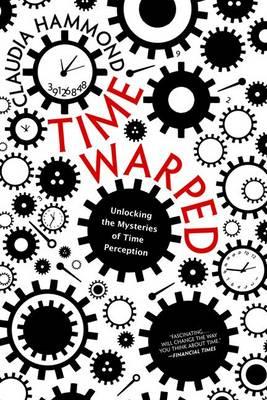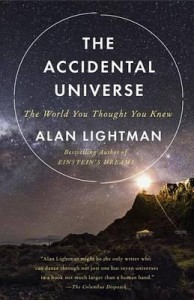The Arrow of Time, or Time’s Arrow, is a concept developed in 1927 by the by the British astronomer Arthur Eddington involving the “one-way direction” or “asymmetry” of time. This direction, which can be determined, according to Eddington, by the studying of the organisation of atoms, molecules and bodies. Time Warped: Unlocking the Mysteries of Time Perception — a foray into the idea that our experience of time is actively created by our own minds and how these sensations of what neuroscientists and psychologists call mind time are created is written by acclaimed BBC broadcaster and psychology writer Claudia Hammond.
The latest cosmological theories explain why humans, trapped within the decay or entropy of their own forms, possess an illusory sense of time as running in only one direction. In a world of increasing polarisation, where the push to fundamentalism of thought and creed is contrasted with an accelerating push towards a coming enlightenment of the human condition by some of the world’s greatest intellects, these debates are increasingly vital.
Physical processes at the microscopic level are believed to be either entirely or mostly time-symmetric: if the direction of time were to reverse, the theoretical statements that describe them would remain true. Yet at the macroscopic level it often appears that this is not the case: there is an obvious direction or flow of time.
In the 1928 book The Nature of the Physical World, which helped to popularise the concept, Eddington stated: “Let us draw an arrow arbitrarily. If as we follow the arrow we find more and more of the random element in the state of the world, then the arrow is pointing towards the future; if the random element decreases the arrow points towards the past. That is the only distinction known to physics. This follows at once if our fundamental contention is admitted that the introduction of randomness is the only thing which cannot be undone. I shall use the expression ‘time’s arrows’ to express this one-way property of time which has no analogue in space.”
Eddington then gives three points to note about this arrow:
- It is vividly recognised by consciousness
- It is equally insisted on by our reasoning facility, which tells us that a reversal of the arrow would render the world nonsensical
- It makes no appearance in the physical sciences except in the study of the organisation of individuals
According to Eddington the arrow indicates the direction of the progressive increase of the random element. Following a lengthy discussion of the nature of thermodynamics, he concludes that is a quality of entropy alone.
A related mental arrow arises because one has the perception that time is a continuous movement from the known past to the unknown future. However a perception of time is culturally determined.
The words yesterday and tomorrow both translate to the same word in Hindi, “kas”, a day distant from today.
The ever brilliant Maria Popova writes in her startlingly clever newsletter Brainpickings, now rebadged as The Marginalian, the world’s most significant literary newsletter: “Time perception matters because it is the experience of time that roots us in our mental reality.”
She writes that for those beset by the desire to write diaries, and then to marvel at their own distortions of the proximity of events in their own past, raises fundamental questions on how the human mind works. The science is at first unsettling, then strangely comforting, and altogether intensely interesting.
As disorienting as the concept might seem — after all, we’ve been nursed on the belief that time is one of those few utterly reliable and objective things in life — it is also empowering to think that the very phenomenon depicted as the unforgiving dictator of life is something that we might be able to shape and benefit from.
Hammond writes: “We construct the experience of time in our minds, so it follows we are able to change the elements we find troubling — whether it’s trying to stop the years racing past, or speeding up time when we’re stuck in a queue, trying to live more in the present, or working out how long ago we saw our old friends. Time can be a friend, but it can also be an enemy. The trick is to harness it, whether at home, at work, or even in social policy, and to work in line with our conception of time. Time is not only at the heart of the way we organise out life, but the way we experience it.”
Among the most intriguing illustrations of mind time is the incredible elasticity of how we experience time. Time slows down when we are gripped by mortal fear. Inversely, time seems to speed up as we get older; the previous decade seems to have gone by in an instant, the decades of our childhood to have lasted forever. It is as though we are looking through an inverse telescope, the closer things are, the further away they seem.
And yet the brain does keep track of time, no matter how inaccurately. Hammond explains this inner chronometry: “It is clear that however the brain counts time, it has a system that is very flexible. It takes account of emotions, absorptions, expectations, the demands of a task and even the temperature. The precise sense we are using also makes a difference; an auditory event appears longer than a visual one. Yet somehow the concept of time created by the mind feels very real, so real that we feel we know what to expect from it, and are perpetually surprised when it confuses us by warping.”
Ultimately time, the source of great mystery and frustration also holds the promise of great liberation and empowerment. Hammond concludes: “We will never have total control over this extraordinary dimension. Time will warp and confuse and baffle and entertain however much we learn about its capacities. But the more we learn, the more we can shape it to our will and destiny. We can slow it down or speed it up. We can hold on to the past more securely and predict the future more accurately. Mental time-travel is one of the greatest gifts of mind. It makes us human, and it makes us special.”
RELATED STORIES





1 Pingback